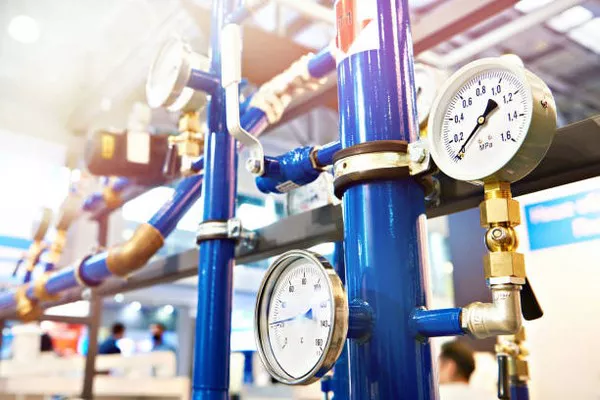Pressure gauges are essential instruments used across various industries to measure and monitor fluid, gas, or steam pressure. These devices ensure the proper functioning of equipment, help maintain safety, and improve operational efficiency. One common feature seen in many pressure gauges is the presence of a liquid inside the gauge housing. This liquid serves a crucial role in the performance and longevity of the gauge. But what exactly is this liquid, and why is it used? This article will explore the types, functions, and benefits of the liquid in pressure gauges.
Understanding the Liquid-Filled Pressure Gauge
A liquid-filled pressure gauge is a type of gauge where the internal chamber is partially filled with a damping liquid, typically surrounding the internal components such as the Bourdon tube and movement mechanism. The presence of this liquid significantly enhances the gauge’s ability to perform in harsh environments.
Common Liquids Used in Pressure Gauges
The most commonly used liquids in pressure gauges include:
Glycerin
- One of the most widely used fill liquids.
- Provides effective damping of vibrations.
- Suitable for moderate temperature ranges (-20°C to 60°C or -4°F to 140°F).
Silicone Oil
- Preferred for extreme temperature variations.
- Offers excellent resistance to freezing (-60°C and lower) and high temperatures (+100°C or more).
- Commonly used in outdoor applications and high-temperature environments.
Mineral Oil
- A cost-effective alternative to glycerin.
- Provides good vibration resistance.
- Less commonly used due to its lower thermal stability.
Halocarbon Oil
- Used in oxygen and other reactive gas applications to prevent combustion.
- Provides similar benefits as silicone oil.
Mixtures of the Above Liquids
Some gauges use a blend of glycerin and silicone to optimize performance across different conditions.
Why is Liquid Used in Pressure Gauges?
The inclusion of liquid in a pressure gauge serves multiple purposes, each contributing to the reliability and longevity of the device.
1. Vibration and Shock Absorption
Many pressure gauges operate in environments where mechanical vibrations or sudden pressure fluctuations can impact their accuracy. The liquid inside the gauge dampens these effects, stabilizing the needle and allowing for more precise readings.
2. Protection Against Environmental Factors
In industries such as oil and gas, manufacturing, and chemical processing, pressure gauges may be exposed to extreme temperatures, moisture, and corrosive substances. The liquid inside the gauge forms a barrier, reducing the risk of internal component damage.
3. Improved Longevity
The continuous movement of gauge components can lead to wear and tear over time. The presence of liquid reduces friction and minimizes component degradation, thereby extending the gauge’s operational life.
4. Prevention of Condensation
In humid environments, condensation can form inside a dry pressure gauge, leading to fogging and reduced visibility of the dial. A liquid-filled gauge eliminates this problem by preventing internal moisture accumulation.
Applications of Liquid-Filled Pressure Gauges
Liquid-filled pressure gauges are widely used in industries where precision and durability are crucial. Some key applications include:
- Oil and Gas Industry: Used in drilling rigs, pipelines, and refineries where exposure to vibration and extreme temperatures is common.
- Chemical Processing: Essential for handling corrosive chemicals and maintaining pressure control in industrial processes.
- Food and Beverage Industry: Used in processing plants where sanitation, temperature control, and pressure stability are necessary.
- Marine and Offshore: Protects against saltwater corrosion and ensures accurate pressure readings in marine environments.
- Automotive and Heavy Machinery: Used in hydraulic systems to ensure smooth operation and performance reliability.
Considerations When Selecting a Liquid-Filled Pressure Gauge
When choosing a liquid-filled pressure gauge, several factors should be taken into account:
- Temperature Range: Ensure the liquid used can withstand the operating temperature.
- Compatibility: Some applications, such as oxygen service, require special fill liquids like halocarbon oil.
- Accuracy Requirements: Choose a gauge with the right precision level for the intended use.
- Environmental Conditions: Consider exposure to vibrations, corrosive substances, and weather conditions.
Conclusion
The liquid in a pressure gauge plays a vital role in improving the durability, accuracy, and reliability of the instrument. Whether it is glycerin, silicone oil, mineral oil, or halocarbon oil, the choice of liquid depends on the specific application and environmental factors. By damping vibrations, preventing condensation, and extending the gauge’s lifespan, liquid-filled pressure gauges prove to be indispensable tools in a wide range of industries. Selecting the appropriate liquid-filled gauge ensures optimal performance and longevity in demanding operational conditions.

